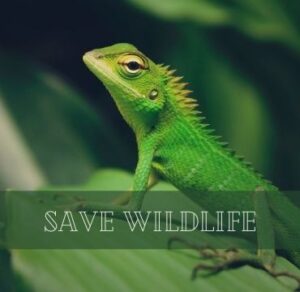All You Need To Know When Traveling With Your Cat

Most cats don’t like to travel – they are strongly attached to their territory and feel very vulnerable outside of it. Being part of a group of travelers and being able to explore unknown places hardly ever excites a cat, while normally it excites dogs.
However, if you decide to travel with your cat by train, car or plane, first make sure that it is comfortable and safe in its cage, in which it will remain until the end of the journey and until it adapts to the new one territory. Certainly, some cats used to travel frequently with their owners generally don’t show signs of panic and don’t try to escape when they are in a new environment. Rarely, however, can cat get used to traveling.
Traveling by Car
It can be really dangerous to leave a cat-free in the car – not only because it could cause an accident by distracting the driver, but also because it could run away and get lost in the event that the windows and doors are accidentally left open.
Better to buy a travel cage that is resistant and easy to clean: in fact, the cat may have to make its needs or feel nauseous during the journey. Also take into account the climatic conditions, both during the trip and in the place where you are going. If it is very hot, choose a cage that allows good ventilation – if it is cold, choose one that maintains the heat without drafts, making sure that there is a good passage of air.
Place the cage in a safe place so that no sudden braking moves it from the position. On the other hand, it is not advisable to put it in the trunk together with other objects and suitcases where there may be insufficient air available. You can place the cage behind one of the front seats or use the seat belt to secure it well to the seat.
What Is All This Noise?
The cat may meow at first or even throughout the journey – talk to him gently and reassure him but avoid letting him get out of his cage. The mews will probably be annoying, but you can rest assured that the cat is not suffering, he is only trying to tell you that he does not like to travel. Probably the continuous movement and the noise of the machine will induce him to sleep or at least calm him.
Pro Tip: Choose the best, suitable, and cute boy cat name for your cat so he can understand whenever you talk to him.
Check your cat regularly, especially if it’s hot – don’t underestimate how quickly the temperature can rise inside the car – and remember if you stop to cool off and leave the cat in the car. Park in the shade and leave the windows open – if it’s really hot it would be advisable never to leave it alone and check often that it doesn’t have a heat stroke – it could be fatal.
Also Read: Why You Should Keep A Pet?
Travel by Train
Of course, if you are traveling by train you will need a very safe cage from which it is impossible to escape, but which is also light to carry. Better to have a solid base in such a way that in case of needs it does not dirty the train carriage. Line it with paper or absorbent material and also carry a spare cover. It is likely that you can hold the cat in its cage on its knees if there is enough space in the train.
Air Travel
If you have to travel by plane with your cat, you should plan everything long before. The choice of airline and how they will travel your cat could influence the choice. Most airlines do not allow cats to travel with their owners but must travel to a special space in the hold which is heated and pressurized. Most cats travel safely, but it is not advisable to travel with a pregnant cat or puppies under the age of three months. Keep in mind that not all flights are allowed to transport animals, so the cat may travel on a different flight than yours.
If possible, organize a direct flight in order to avoid that the cat is further stressed during the stopover and prevent some problems associated with waiting time in a very hot or very cold country. The International Air Transport Association Standards states that the cage should be large enough to allow the cat to stand up and turn around easily – but it is advisable to always contact the airline first.
Arrival at Destination
When you arrive, put the cat in a room and make sure it is safe, comfortable and that it cannot escape. Give him water and some food, although he won’t show interest until he settles down. Don’t let it go out for at least a week and make it identifiable in case you get lost. It would be advisable not to feed him for at least 12 hours so the hungry cat will naturally be brought back for the regular meal. Let him gradually explore the new environment and use the food to make sure he doesn’t go too far and that he comes back for regular meals.
Use of the Cage
Cats normally associate the cage with a visit to the vet, so they are not very eager to enter! Have your cat get used to the cage or travel basket long before he leaves.
Make it a pleasant place – give him the croquettes when he is inside and let him find a cozy kennel with a blanket with a familiar smell. Leave the door open and encourage the cat to come in and out and sleep in it. Then, when he returns from the trip, the cat will immediately be familiar with his direct environment.
If you have more than one cat it will be better to put them in separate cages so that they have more air, more space, and less chance to get warm. Even the best of your friends can get stressed during a trip and behave in an unusual and agitated way towards you, separate cages prevent any quarrel. They could be comforted if they can see or hear each other.
Do not feed the cat in the four or five hours before the trip, in case he feels bad when traveling. Give them water upon departure and, if possible, also during the trip. You can buy bowls to hang on the cage, they are practical and easy to fill so you don’t have to pour water on the way.
Author Bio:
Matka Eve is a vet nurse, pet blogger and nutritionist. She holds an associate degree in veterinary nursing and serving the field for 7 years. She writes about lifestyle with a pet, food, disease, and remedies.







